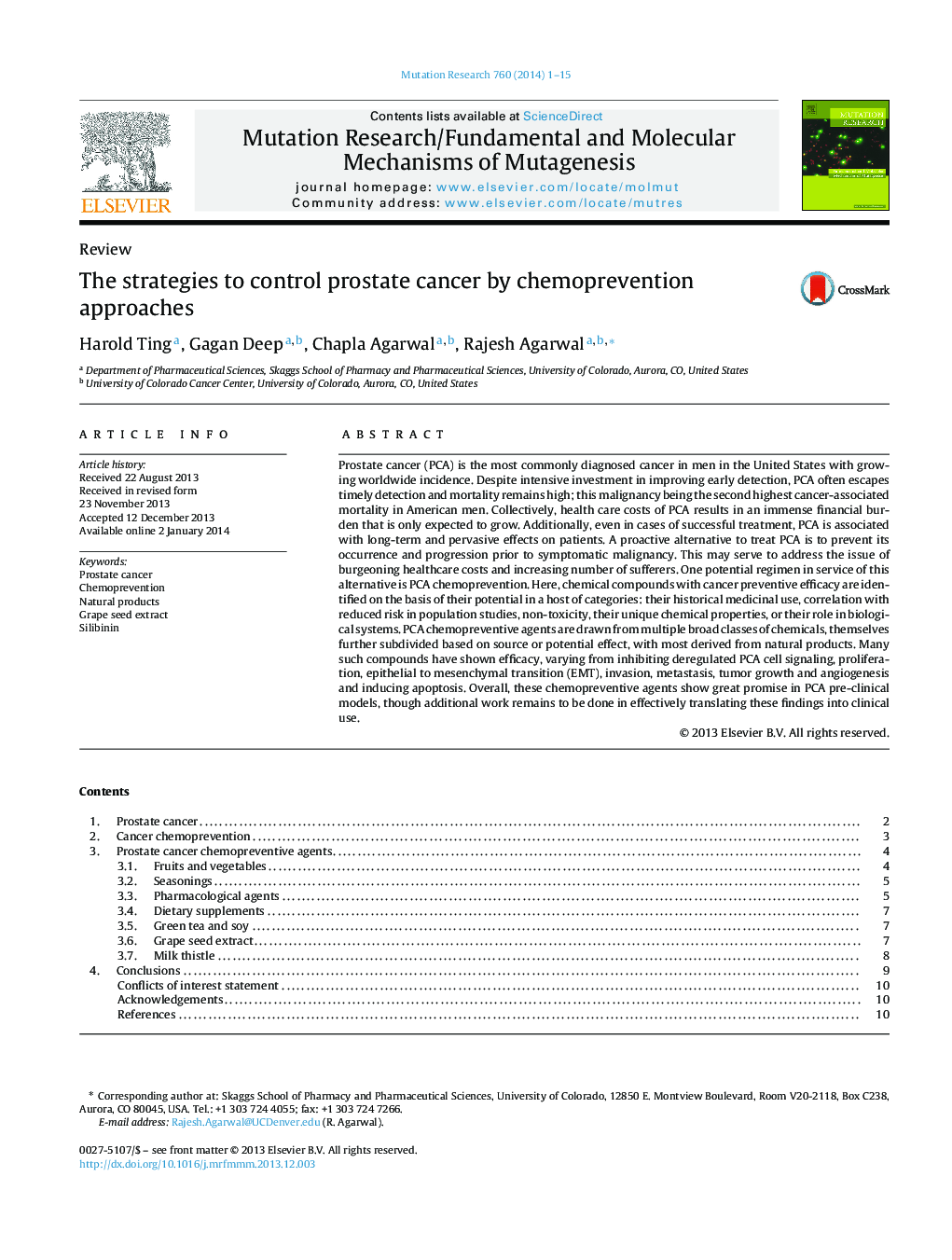| Article ID | Journal | Published Year | Pages | File Type |
|---|---|---|---|---|
| 2146306 | Mutation Research/Fundamental and Molecular Mechanisms of Mutagenesis | 2014 | 15 Pages |
Prostate cancer (PCA) is the most commonly diagnosed cancer in men in the United States with growing worldwide incidence. Despite intensive investment in improving early detection, PCA often escapes timely detection and mortality remains high; this malignancy being the second highest cancer-associated mortality in American men. Collectively, health care costs of PCA results in an immense financial burden that is only expected to grow. Additionally, even in cases of successful treatment, PCA is associated with long-term and pervasive effects on patients. A proactive alternative to treat PCA is to prevent its occurrence and progression prior to symptomatic malignancy. This may serve to address the issue of burgeoning healthcare costs and increasing number of sufferers. One potential regimen in service of this alternative is PCA chemoprevention. Here, chemical compounds with cancer preventive efficacy are identified on the basis of their potential in a host of categories: their historical medicinal use, correlation with reduced risk in population studies, non-toxicity, their unique chemical properties, or their role in biological systems. PCA chemopreventive agents are drawn from multiple broad classes of chemicals, themselves further subdivided based on source or potential effect, with most derived from natural products. Many such compounds have shown efficacy, varying from inhibiting deregulated PCA cell signaling, proliferation, epithelial to mesenchymal transition (EMT), invasion, metastasis, tumor growth and angiogenesis and inducing apoptosis. Overall, these chemopreventive agents show great promise in PCA pre-clinical models, though additional work remains to be done in effectively translating these findings into clinical use.
